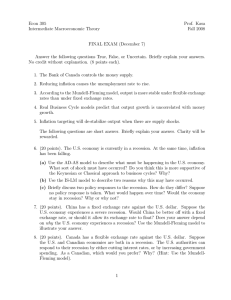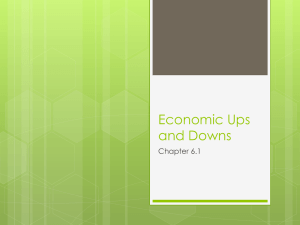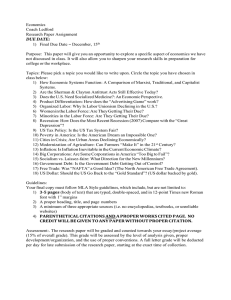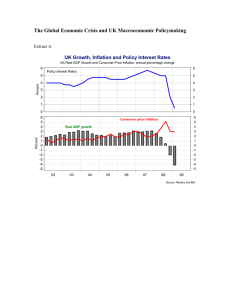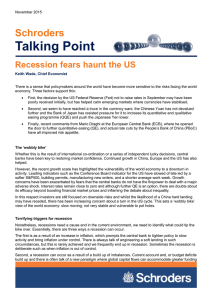Econ 305 Prof. Kasa Intermediate Macroeconomic Theory Spring 2001
advertisement
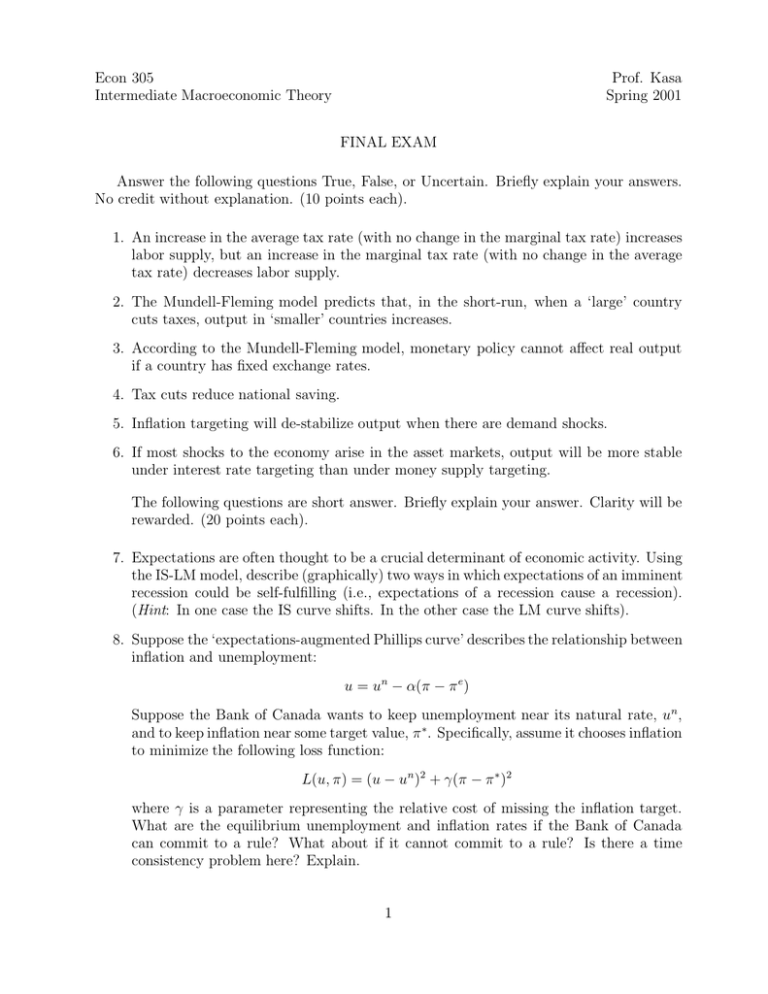
Econ 305 Intermediate Macroeconomic Theory Prof. Kasa Spring 2001 FINAL EXAM Answer the following questions True, False, or Uncertain. Briefly explain your answers. No credit without explanation. (10 points each). 1. An increase in the average tax rate (with no change in the marginal tax rate) increases labor supply, but an increase in the marginal tax rate (with no change in the average tax rate) decreases labor supply. 2. The Mundell-Fleming model predicts that, in the short-run, when a ‘large’ country cuts taxes, output in ‘smaller’ countries increases. 3. According to the Mundell-Fleming model, monetary policy cannot affect real output if a country has fixed exchange rates. 4. Tax cuts reduce national saving. 5. Inflation targeting will de-stabilize output when there are demand shocks. 6. If most shocks to the economy arise in the asset markets, output will be more stable under interest rate targeting than under money supply targeting. The following questions are short answer. Briefly explain your answer. Clarity will be rewarded. (20 points each). 7. Expectations are often thought to be a crucial determinant of economic activity. Using the IS-LM model, describe (graphically) two ways in which expectations of an imminent recession could be self-fulfilling (i.e., expectations of a recession cause a recession). (Hint: In one case the IS curve shifts. In the other case the LM curve shifts). 8. Suppose the ‘expectations-augmented Phillips curve’ describes the relationship between inflation and unemployment: u = un − α(π − π e ) Suppose the Bank of Canada wants to keep unemployment near its natural rate, un , and to keep inflation near some target value, π ∗. Specifically, assume it chooses inflation to minimize the following loss function: L(u, π) = (u − un )2 + γ(π − π ∗ )2 where γ is a parameter representing the relative cost of missing the inflation target. What are the equilibrium unemployment and inflation rates if the Bank of Canada can commit to a rule? What about if it cannot commit to a rule? Is there a time consistency problem here? Explain. 1



